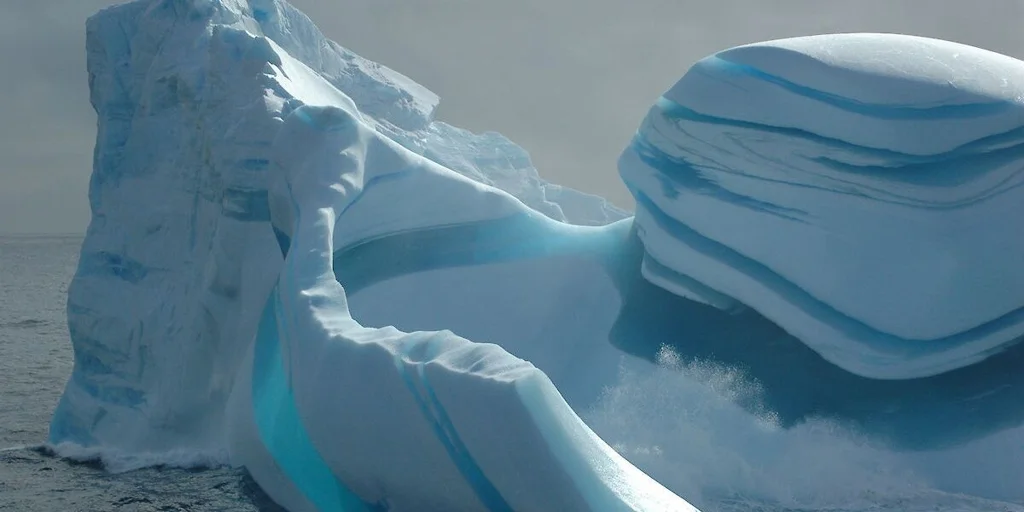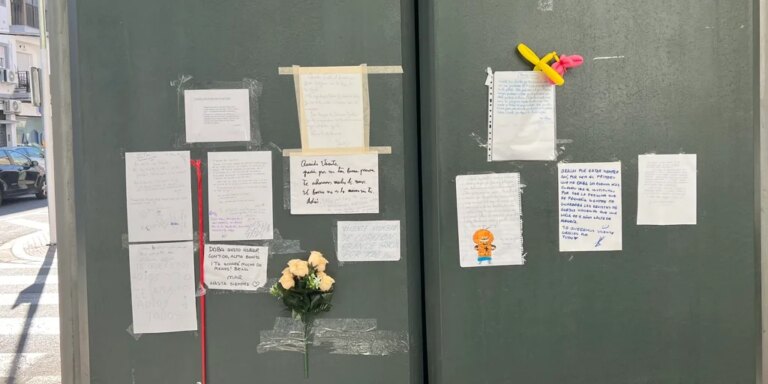
It’s like something out of science fiction. An international team of researchers has successfully recovered a sample of air that was “trapped” deep in Antarctic ice for more than six million years. A scientific record, but above all an open window to what’s next … An Earth radically different from the Earth we know today. This surprising discovery was just published in the Proceedings of the National Academy of Sciences (PNAS).
The oldest air samples ever obtained were trapped about 200 meters deep in ice in the remote Arran Hills region of East Antarctica. And what makes this planet so spectacular is its origins. The late Miocene to early Pliocene period in Earth’s history was a time when temperatures were much warmer and sea levels much higher than they are today.
The team of scientists responsible for the COLDEX (Oldest Ice Exploration Center) project, under the guidance of Woods Hole Oceanographic Institution glaciologist Sarah Shackleton and Ohio State University paleoclimatologist Ed Brooke, exceeded all expectations. In Shackleton’s own words, “Ice cores are like time machines that allow us to see what our planet was like in the past.” And in this case, that “machine” managed to go even further than anyone had imagined.
At the beginning of the expedition, the COLDEX team (a consortium of 15 US institutions) hoped to discover ice from around 3 million years ago that would allow them to study the Pliocene climate. But in the deepest layers, about 206 meters below the surface, an unexpected treasure up to six million years old was revealed, suddenly thrusting scientists into the end of the Miocene.
According to the study, this “climate snapshot library,” as the research team calls it, is already providing surprising results about climate evolution. By analyzing oxygen isotopes in the ice, which are sensitive to temperature conditions, researchers can estimate the temperature in Antarctica, for example, six million years ago, when it was about 12 degrees warmer than today.
The study suggests that the subsequent gradual cooling to today’s frigid temperatures was gradual and gradual over time, rather than an abrupt change. This is the first time that we have directly measured the extent of the cooling of the white continent over the past six million years. Understanding this transition provides historical contrast in modeling how modern ice sheets respond to global warming.
The secret of Aran Hills Blue Ice
What first caught the researchers’ attention was that such ancient ice was only 200 meters deep, but in other parts of Antarctica, collecting much younger samples from just 800,000 years ago would require drilling more than two kilometers. The ‘secret’ lies in the geological peculiarities of the Allan Hills, particularly in the so-called ‘blue ice’.
In this Antarctic region, a combination of persistent high winds, rugged terrain, and bitter cold created what could be described as a geological miracle. In fact, the wind constantly sweeps away the fresh snow that falls, preventing it from accumulating. Then, the extreme cold slows the glacier’s flow to the point where it almost stops. This strange combination of factors can cause old, deep ice sheets, which are usually pushed down by the weight of new snow, to emerge or remain near the surface.
In addition to the above, over time this ice has undergone significant compression. This is a process similar to when a substance such as coal is transformed into diamond under great pressure. In blue ice, this understanding “squeezes” the air bubbles, binding them into tiny microscopic pockets that lodge directly in the crystalline structure of the ice itself. Although the bubbles cannot be seen with the naked eye, gases from the atmosphere are trapped inside the bottle like a message. And it is precisely that ultra-compact air that scientists most covet, because it provides an unaltered sample of the atmosphere at the time it was confined.
Atmosphere of the past…
To determine the age of the ice with great precision, Shackleton, Brooke, and their team did not limit themselves to indirect dating methods (such as dating the surrounding sediment layers), but instead turned to argon isotope analysis, a direct dating system for the ice itself.
Argon is a chemically inert noble gas that is part of the air in pockets trapped within the ice. And by measuring the ratio of its isotopes, scientists can establish the age of a sample with great precision. This process is highly reliable because it does not rely on inferences about ice flow or local snowfall, turning these isolated ancient ice fragments into a coherent “chronological library.” “These fragments create a ‘library’ of snapshots that are six times older than any other ice core data reported to date,” said John Higgins of Princeton University, also a member of COLDEX.
The Allan Hills discovery is part of a global “friendly race” to extend the ice core record beyond the established limit of 800,000 years. The COLDEX project rivals efforts such as Beyond EPICA, by European scientists who recently announced they had obtained a 1.2-million-year-old ice core in the interior of East Antarctica.
…and your future too
The importance of these discoveries goes far beyond mere scientific curiosity. In fact, the ultimate goal of the research is to understand how sensitive the Earth is to greenhouse gases.
To do this, scientists will now focus on reconstructing the chemical composition of the atmosphere as it was six million years ago. This involves measuring the concentration of gases such as carbon dioxide and methane. During the late Miocene, the Earth experienced significant warming and sea levels rose significantly. Therefore, by simultaneously correlating estimated temperatures with greenhouse gas concentrations, researchers could improve climate models that predict the Earth’s future.
In other words, this 6 million-year “time capsule” gives us climate history lessons that can help us avoid future mistakes. In fact, the information obtained will make it possible to study what happens in the “Earth system” (atmosphere, ocean, ice sheets) when important climate thresholds are exceeded.
The paper’s authors have already announced that a new, more ambitious study of the region will be carried out between 2026 and 2031. The purpose is clear. The goal is to go further back in the record and continue to recover atmospheric debris from Antarctica’s distant past, arguably the most valuable “climate library” on Earth.



